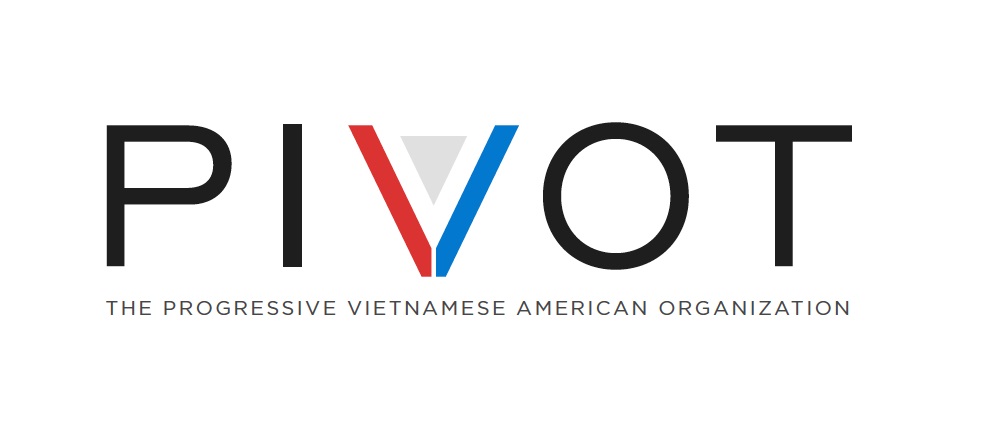A Slap in the Face to Equality Within the Asian American Community
/May 7, 2018
C. Huynh is a senior at the University of Maryland, College Park
Janelle Wong is Senior Researcher at AAPI Data
Asian Americans have the highest annual household income and are most likely to hold a bachelor’s degree of any racial group in the United States. However, collecting detailed data on different Asian national-origin groups in the U.S. reveals disparities within the broader “Asian American” racial category. Asian American civil rights groups, led by Southeast Asian advocacy organizations, have long led the charge for the collection of detailed ethnic data, arguing that these data are essential to policymakers, with information about needs within the community that are often hidden.
Recently, however, collecting these data has created rifts among Asian Americans. In particular, Chinese immigrant activists have campaigned against the collection of detailed data on Asian Americans by state and local agencies. Their arguments range from fears that these data will highlight the relatively high numbers of Chinese Americans in higher education and lead to bias in college admissions, to fears of ethnic profiling for purposes of discrimination. The controversy over racial and ethnic data collection – with some Asian American groups (such as Chinese) wanting less and others (such as Cambodians and Hmong) wanting more – shines a light on the very issue that these data are designed to address - inequality and disadvantage within the Asian American population. This opposition has real implications for representation and resources for Southeast Asians in the U.S.
The challenge by relatively advantaged groups in the Chinese community to the collection of detailed data on Asian Americans further marginalizes Southeast Asian communities and, while perhaps unintended, is a slap in the face to equality.
Without these data, groups that arrived mostly as refugees from Vietnam, Cambodia, and Laos after the “American War” in Southeast Asia (1955-1975) would be lumped in with Asian groups like Chinese and Indians, who are primarily in the U.S. as a result of economic migration. Not only do Southeast Asians exhibit a very different migration history from other Asian groups, they are also much smaller. Chinese Americans are the largest Asian American ethnic group in the country, making up almost one-quarter of the Asian American population. In contrast, Southeast Asian groups make-up a much smaller proportion; together, Cambodians and Hmong make-up less than 5% of the Asian American population and Vietnamese constitute less than 10 percent. The result of grouping large national-origin groups like Chinese with much smaller groups like Cambodians is that Chinese Americans dominate the demographic story of Asian American success. Lost in this story are the struggles of less advantaged, smaller groups to obtain higher education and escape poverty. Lost is the ability of less advantaged, smaller groups to obtain government services and support that could help them obtain the average socioeconomic success of groups like Chinese Americans.
Southeast Asian Americans are less likely to hold a bachelor’s degree compared to their Chinese, Japanese, and Korean counterparts. While only 20 percent of Asian Americans do not have their high school diploma (comparable to the national average), detailed data show that an overwhelming 60 percent of Hmong Americans are without their diploma. Median income across Asian Americans diverges as well. In 2014, the median household income of Chinese Americans was over $70,000, while Vietnamese, Laotian and Cambodian Americans’ median household income was less than $60,000. In addition, Chinese Americans also report having fewer financial problems than other Asian American groups. Just 10 percent of Chinese Americans say that being able to pay rent or the mortgage is a very serious problem. In contrast, 57 percent of Hmong and 47 percent of Cambodians report the same. Finally, health outcomes may vary widely among Asian American groups. A 2016 report by the U.S. Center for Disease Control and Prevention’s National Center for Health Statistics, finds that while the Asian American population overall reports more positive ratings on five measures of health than the general U.S. population, Vietnamese are much more likely to say that their health is “poor” or “fair” and to report serious psychological distress than the overall U.S. population.
Chinese immigrant voices dominate opposition to the collection of detailed data on Asian Americans. Yet, even Chinese Americans and other advantaged Asian groups stand to benefit from these data. It is only because of detailed data collection that we know that Chinese Americans are more likely to die of chronic respiratory issues or influenza. Disaggregating data allows us to better address health issues, tailor treatment plans, and cater to specific needs. It gives us more accurate data, which is arguably “better data.”
High-quality, transparent data remain most critical for the most disadvantaged within the Asian American community, however. According to Theanvy Kouch from the Khmer Health Advocates, collecting data on ethnicity and disaggregating data is crucial in proving that trauma to Southeast Asian communities has led to diabetes, heart disease, and depression.
We must question the consequences of abandoning practices that make the needs of the least advantaged even harder to see. This is especially true when the call for less information comes from the most advantaged groups in terms of size and resources.
